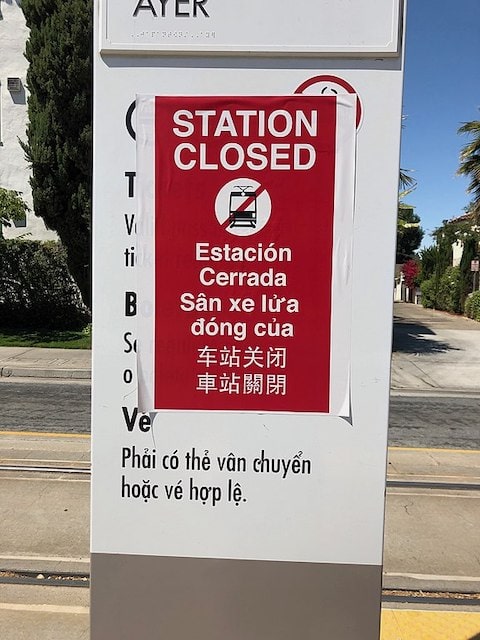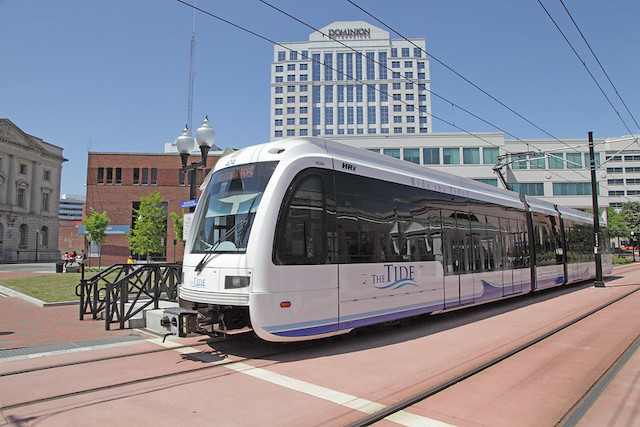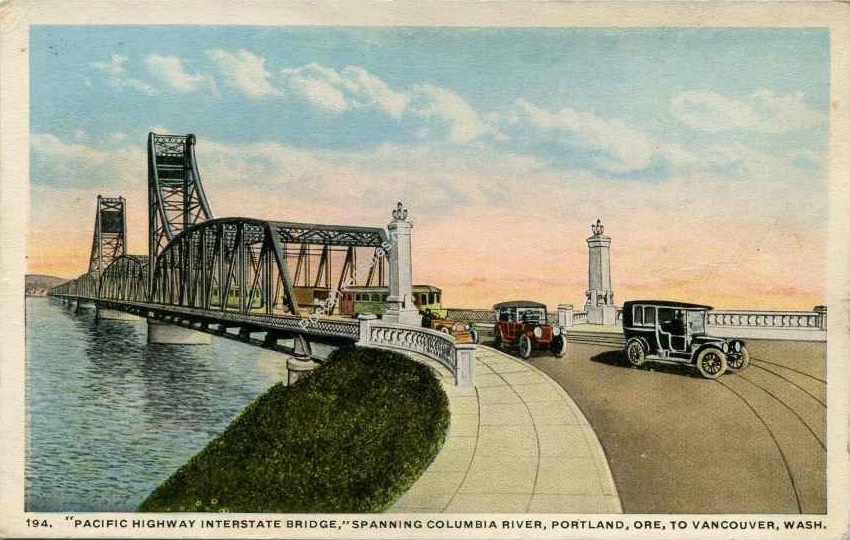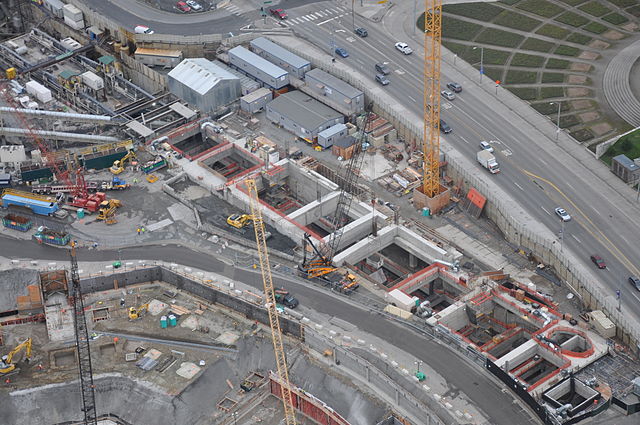Last week, the Santa Clara Valley Transportation Authority (VTA) resumed “limited” light-rail service for the first time since the May 26 shooting at VTA’s maintenance center. Service began on the Orange Line and part of the Green Line. A week later, part of the Blue Line opened along with another segment of the Green Line. VTA has to test tracks on each segment before it can open; some lines were lower priorities, said the agency, because they carried few riders, providing further support for the Antiplanner’s belief that light rail was the wrong technology for San Jose in the first place.
 VTA closed its light-rail system for more than three months and part of the system will be closed for even longer. Photo by Minh Nguyen.
VTA closed its light-rail system for more than three months and part of the system will be closed for even longer. Photo by Minh Nguyen.
VTA claims it closed down the light-rail operations “to give employees time to heal from the traumatic experience” of the May 26 shooting. But transit advocate Eugene Bradley pointed out “that other major cities that experienced violent disruptions of transit, such as New York and London, managed to restore service within hours.” Not only did VTA not run light-rail trains for three months, for much of that time it didn’t provide light-rail riders with alternative bus services. “VTA is showing the world how to not recover from a tragedy,” said Bradley. Continue reading










